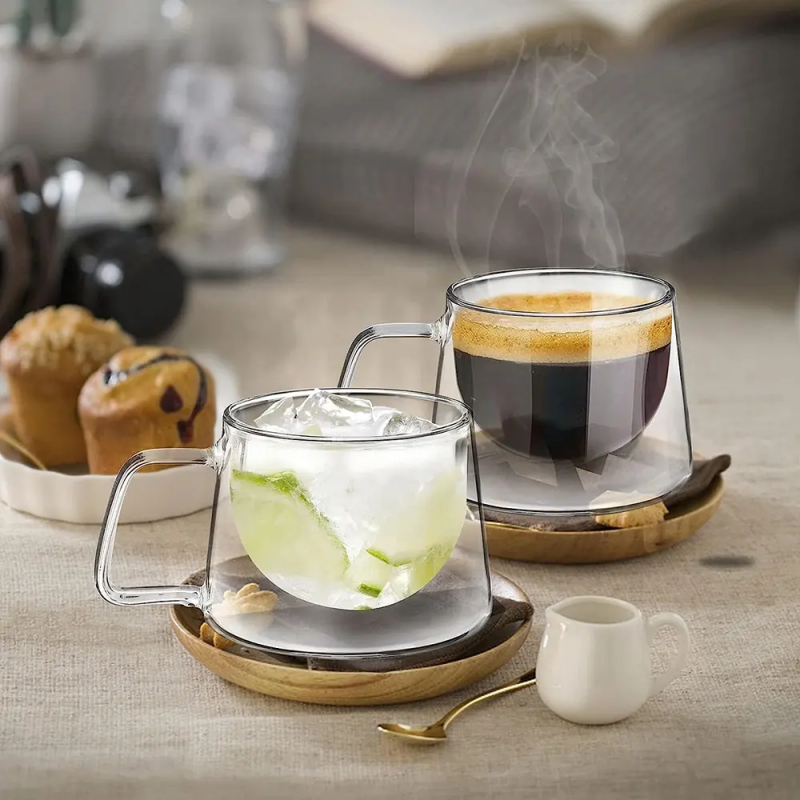|
Table of contents
|
|
1. What is Borosilicate Glass? |
|
2. Properties of Borosilicate Glass |
|
3. What is Heat-Resistant Glass? |
|
4. Properties of Heat-Resistant Glass |
|
5. Comparison of Borosilicate Glass and Heat-Resistant Glass |
|
6. Conclusion |
There are several types of glassware available, each designed for a specificpurpose. Of the different types available, borosilicate glass and heat resistant glassare often compared due to their similar applications and properties. Understandingthe differences between these two types of glass can help consumers make aninformed decision when choosing the right glassware for their needs.

What ls Borosilicate Glass?
Borosilicate glass is a type of glass that contains boron trioxide as a majorcomponent. lt is known for its high resistance to thermal shock, making it ideal forapplications where sudden temperature changes are common. Borosilicate glasswas first developed by German glassmaker Otto Schott in the late 19th century andhas since become widely used in various industries.
Properties Of Borosilicate Glass
Thermal Expansion
One of the key properties of borosilicate glass is its low coefficient of thermalexpansion. This means that it expands and contracts less than other types of glasswhen the temperature changes. As a result, borosilicate glass is less likely to crackor shatter due to thermal stress.
Durability
Borosilicate glass is extremely durable and scratch-resistant, making it suitable foruse in harsh environments. lt can withstand sudden temperature changes withoutbreaking, making it ideal for laboratory glassware, cookware and lightingapplications.
Chemical Resistance
Another important characteristic of borosilicate glass is its chemical resistance. lt isinert to most chemicals, including acids, alkalis and solvents, making it suitable foruse in laboratories and chemical processing plants.

What Is Heat-Resistant Glass?
Heat-resistant glass, also known as tempered glass or toughened glass, is a type ofglass that has been specially treated to increase its resistance to heat andmechanical stress. lt is commonly used in applications where safety is a concern,such as in windows, doors, and cookware.
Properties Of Heat-Resistant Glass
Composition
Heat-resistant glass is made by heating ordinary glass to high temperatures andthen rapidly cooling it, This process alters the molecular structure of the glass,increasing its strength and durability. As a result, heat-resistant glass is able towithstand higher temperatures than untreated glass without breaking orshattering.
Heat Tolerance
One of the main advantages of heat-resistant glass is its ability to withstand hightemperatures without deforming or breaking. lt can typically withstandtemperatures of up to 400-500’C(750-930°F) without experiencing thermalshock, making it suitable for use in ovens, stovetops, and other high-temperatureapplications.
Impact Resistance
In addition to its heat resistance, heat-resistant glass is also highly impact-resistant. lt is able to withstand sudden impacts and shocks without breaking.making it a safe and durable choice for use in a variety of applications.

Comparison Of Borosilicate Glass And Heat-Resistant Glass
When comparing borosilicate glass to heat-resistant glass, several factors shouldbe considered, including thermal shock resistance, application and price.
Thermal Shock Resistance
While both borosilicate glass and heat-resistant glass are resistant to thermalshock, borosilicate glass typically has a higher resistance to sudden temperaturechanges. This makes it a better choice for applications where extreme temperaturechanges are common, such as laboratory experiments or cooking.
Areas of Application
Both borosilicate glass and heat-resistant glass have a wide range of applications,including laboratory glassware, cookware and lighting. However, borosilicate glassis often preferred for applications where thermal shock resistance is critical, whileheat-resistant glass is preferred for applications where high temperatures are aconcern.
Price
In terms of price, borosilicate glass is generally more expensive than heat resistantglass. This is due to the additional manufacturing process required to produceborosilicate glass and its higher thermal shock resistance.

Conclusion
In summary, both borosilicate glass and heat resistant glass are versatile materialswith unique properties that make them suitable for a wide range of applications.While borosilicate glass offers superior thermal impact resistance, heat-resistantglass is superior in its ability to withstand high temperatures. Ultimately, the choicebetween these two types of glass will depend on the specific requirements of theapplication and consumer preference.
Contact us to get the glass products you desire.





